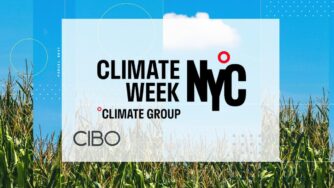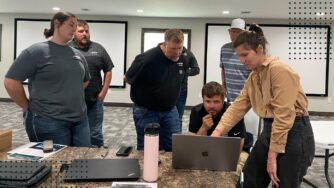Farmers Weekly recently published an article on “Why Soil Measurement is a Key Challenge for Carbon Farming,” which explored the benefits and challenges to soil sampling and modeling. The focus was on how carbon credits guarantee permanence and what counts as a new activity.
Costs and Benefits of Soil Sampling
One of the most significant drawbacks to soil sampling is the cost. These can range from planning costs for where and when to take samples and labor costs of sampling and laboratory analysis.
“Depending on the number of cores needed to be taken, which will depend on soil variability, those costs can be up to $20,000 (£10,860), with about half of that the labour costs, for a 200ha project,” explains Sam Duncan, founder of Australian startup FarmLab, which provides data support for soil carbon projects.
The article shares, “After baseline sampling at the start of the project, sampling then needs to be repeated anywhere between two and five years later to check for differences. Ultimately, both suggest a hybrid system of modeling backed up by measurement might provide the best compromise between economics and carbon credit veracity.”
At CIBO, we agree that a combination of soil sampling and modeling is the best way to capture the total cost of carbon credits. CIBO combines remote sensing and computer vision with a globally validated science framework and real-world variables like soil, weather, plant physiology to develop sophisticated modelings of entire agricultural ecosystems.
The CIBO modeling team inputs SSURGO data and individual soil sampling to ensure that the carbon credit attributions are as accurate as possible. Through the platform, users can pinpoint how specific variables will impact possible outcomes over specific timeframes, helping our customers optimize processes and decision-making. This combination of methods reduces costs to the farmer and a more accurate soil carbon verification.
Additionality
A key component to measuring the amount of carbon credits farmers are eligible for is additionality. That’s the principle that buyers only pay for activities that would not happen without the sale of carbon credits.
The article shares, “But what counts as new? Some schemes require farmers to show the practice is new to their farm, others that it is new based on regional averages, so a farmer can earn credits even if they have been using a practice for many years, if it is not widely used in their region. And other verifiers have developed even more complex criteria based on both previous use on farms and in the locality. Potentially depending on how additionality is interpreted, it makes it difficult for early adopters of cover cropping and other qualifying practices to qualify for carbon credit schemes, unless changes can be grandfathered in.”
“In most cases current contracts are for 10 years, and include clauses around what can and can’t be done in future, so reading the small print will be important, but the uncertainty around all these issues shows just how far the market still has to develop.”
At CIBO, we believe that just because growers have made good decisions in years past does not mean you should be prevented from participating in these programs every year. Agriculture is an annual business and the decisions that growers make every season reflect actual additionality according to the most established protocols. CIBO is the first carbon marketplace to allow and facilitate those annual biodynamic system-based carbon practices to calculate, quantify, and verify those practices.
Farmers are qualified for the carbon they generate on an annual basis based on their practices in this specific year. We are now enrolling new growers for being qualified for 2021 carbon credits based on cover crops planted.



